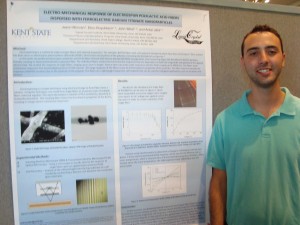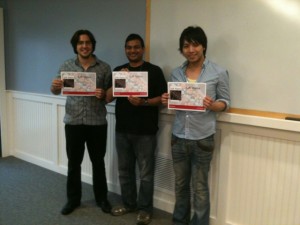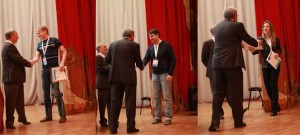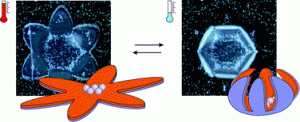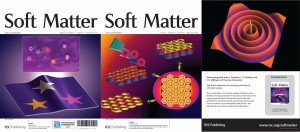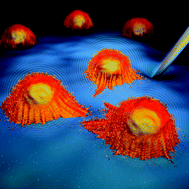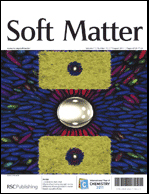 Review
Review
Conditions for and characteristics of nonaqueous micellar solutions and microemulsions with ionic liquids
Oliver Zech and Werner Kunz,
Soft Matter, 2011, 7, 5507-5513
Communications
“Dry ionic liquid” as a newcomer to “dry matter”
Kazushi Shirato and Mitsuru Satoh,
Soft Matter, 2011, 7, 7191-7193
Microemulsions with novel hydrophobic ionic liquids
Jan H. Porada, Markus Mansueto, Sabine Laschat and Cosima Stubenrauch,
Soft Matter, 2011, 7, 6805-6810
Diffusion in ionic liquids: the interplay between molecular structure and dynamics
J. R. Sangoro, C. Iacob, S. Naumov, R. Valiullin, H. Rexhausen, J. Hunger, R. Buchner, V. Strehmel, J. Kärger and F. Kremer,
Soft Matter, 2011, 7, 1678-1681
Papers
Study of micelles and microemulsions formed in a hydrophobic ionic liquid by a dielectric spectroscopy method. I. Interaction and percolation
Yiwei Lian and Kongshuang Zhao,
Soft Matter, 2011, DOI: 10.1039/C1SM05491K, Advance Article
Reversible tuning of the hydrophobic–hydrophilic transition of hydrophobic ionic liquids by means of an electric field
Maolin Sha, Dongxiao Niu, Qiang Dou, Guozhong Wu, Haiping Fang and Jun Hu,
Soft Matter, 2011, 7, 4228-4233
Degree of chain branching-dependent assemblies and conducting behavior in ionic liquid crystalline Janus dendrimers
Jin-Woo Choi and Byoung-Ki Cho,
Soft Matter, 2011, 7, 4045-4049
Micellar dye shuttle between water and an ionic liquid
Carlos Guerrero-Sanchez, Daan Wouters, Stephanie Hoeppener, Richard Hoogenboom and Ulrich S. Schubert,
Soft Matter, 2011, 7, 3827-3831
Ionic liquid crystals derived from 4-hydroxypyridine
Jung-Tang Lu, Ching-Kuan Lee and Ivan J. B. Lin,
Soft Matter, 2011, 7, 3491-3501
Don’t miss Faraday Discussion 154 on Ionic Liquids. The meeting will be held on 22 – 24 August 2011, and the papers will be published online a few months after the meeting. More here… www.rsc.org/fd154
To keep up-to-date with all the latest research, sign up for the journal’s e-alerts or RSS feeds or follow Soft Matter on Twitter.


